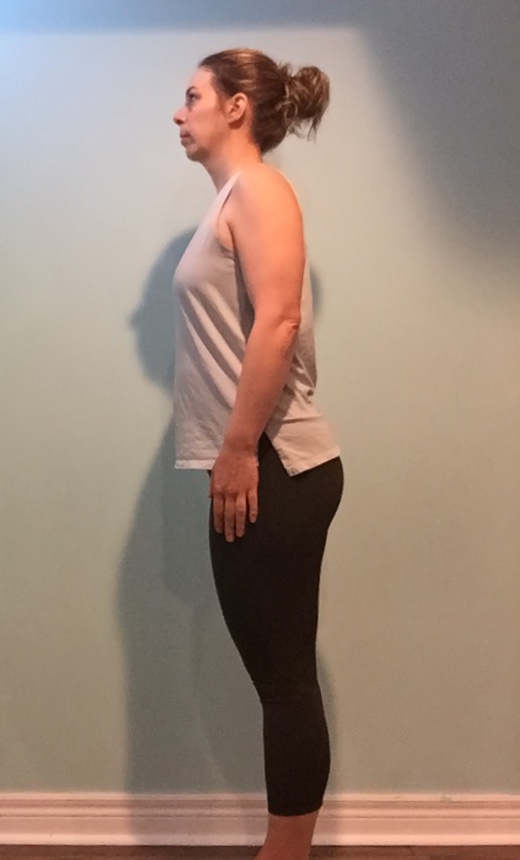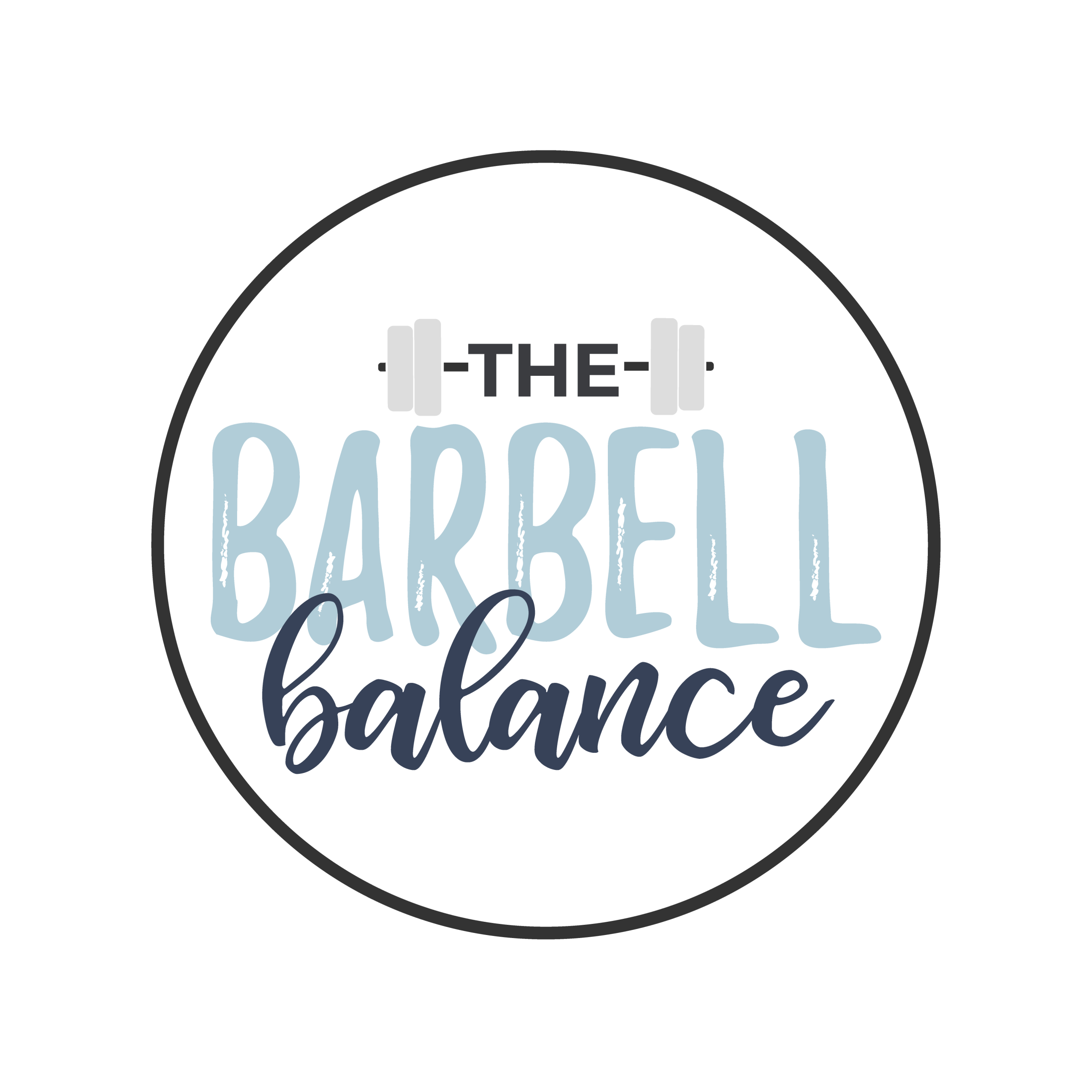From Prolapse To Proud & Powerful
I had Symphysis Pubis Dysfunction (SPD) with my second pregnancy. I was in significant pain from 18 weeks until the day she was born. It was all I could do to get off the couch some days. At one point, I was unable to get myself dressed because I couldn’t lift my leg. It made me feel pathetic. Honestly.
I love lifting weights and had recently joined CrossFit before becoming pregnant with my second baby. I spent that first trimester sick and on my ass. My plan was to go back to CrossFit in my second trimester, but thanks to the SPD, I did nothing. I threw on YouTube videos that my son was obsessed with and parked myself on the couch for 5 months. A once active woman had become a shell of a human. It was miserable,
I wasn’t even able to take my son to the park or get on the floor to play cars. Not being able to take care of my son or myself, took its toll on my self-worth. I was useless. Getting out of bed was a bit of a joke. And trying to walk first thing in the morning would bring me to my knees. Literally. I was even at the point of needing my husband to help me get dressed. I couldn’t get myself dressed, I was in so much pain.
At my appointments with my midwives, I was assured this was normal. Feeling kicked in my vagina with steel toe boots 40 times over was my body’s way of preparing for birth. I guess my body hated my guts and wanted to punish me for everything I did do it. In my 20’s, I beat it up pretty badly. But that’s another story.
So after my diagnosis of POP, I felt trapped. I didn’t return to CrossFit as I had planned and didn’t do much of anything at all. There was no one I knew of to train someone like me. The last thing I needed was to feel more broken than I was.
I spent so much of my pregnancy in pain only to have one of my pelvic organs fall out of my body (well, not literally fall out). It was just another blow, emotionally. Instead of feeling empowered in my body, I was trapped in it.
I spent a year becoming educated in training women like me. Women who were desperate to feel incontrol of their lady parts but wanted to feel empowered to get back to the sports they love but too afraid to split themselves in two.

What Is POP
POP is when one or more of your pelvic organs bulge or descend through your vagina. This be a result in vaginal delivery (you may also have pop if you’ve had a c-section) and it can be exercise induced.
Here’s what you need to know about POP
With nearly 85% of the female population experiencing pregnancy and birth, there is a strong likeliness you may be dealing with a POP.
There are studies suggesting a prolonged active pushing in the second stage of labour and some experts say POP is caused by the forced nature of pushing as well as the birthing position (lying on your back) leaves women vulnerable. The thought is gravity isn’t able to assist the baby down the birth canal, rather being forced out through intense pushing.
Basically, POP is a result of your pelvic floor, the support system for your pelvic organs like bladder, uterus, urethra, and bowels, has lost some of its function. This is typical the the hormonal and structural changes that take place in pregnancy and the impact of labour and birth.
So throwing high-impact training into the mix on already vulnerable pelvic floor before during and after pregnancy can exacerbate any POP, even if there are no initial symptoms present.
These symptoms include:
- Urinary, fecal,or gas incontinence (additionally,vaginal flatulence or “queefing” )
- Back and hip pain/discomfort
- Feeling pressure or bulging in the vagina
- Constipation or straining to urinate
- Painful or dissatisfying intercourse (due to lack of sensation)
Types of POP
- Cystocele (bladder)
- Cystourethrocele (bladder and urethra)
- Rectocele (rectum)
- Uterine (uterus)
- Enterocele (small bowel)
- Vaginal vault (where the upper portion of the vagina sags down into the vagina
A pelvic floor physiotherapist will grade a prolapse based location or descent in the vagina on a 0-4 scale. 0 being normal and 4 being the most severe.
I had managed my POP while not pregnant but this was going to put everything I learned and worked toward to the ultimate test.
I was freaking on the inside. With the training I have, I know that women going into pregnancy with a POP may exacerbate symptoms just because of the hormonal changes alone. Throw training into the mix and things can go south when they need to stay north, if you know what I mean.
But my body felt good for the most part. Strength training was still my main focus but I scaled back, way back. But I also experimented with movements like barbell back squats to see just how much my pregnant body was changing my mobility and stability.
There were a few surprising findings.
At 26 weeks pregnant, I had a massive butt wink with my back squat. This was an indication of some pelvic tightness and core instability. As Tony Gentilcore noted in a guest post I wrote on his website, there seems to be an aggressive arch (or anterior pelvic tilt), which may be causing my lumbar spine to compinate. Then I shut him down with my ninja squatting skills and he STFU (I didn’t ask him to do that. He did so on his own)
At 34 weeks pregnant, I tried the barbell back squat again and was surprised the mobility training improved the entire movement pattern.
Cool, huh?
After having a c-section, I wasn’t sure if my prehab was enough to help my body recover. It was a little on the unexpected side and was a rush decision.
At 3-weeks postpartum, I started the rehab process using Post-Baby Rehab. I had worked for me following my second birth and helped dozens of my in-person coaching clients, but to be honest, my c-section recovery was brutal. But I gave it a go in my pajamas, while my daughter played and baby napped.
Spending 4-months on rehab and retraining with Post-Baby Rehab got me back to a place where I was physically ready for a little more. But emotionally, I wasn’t sure.
After dealing with a prolapse, a traumatic birth, and even more traumatic early postpartum, I wondered if I was going to wreck myself. But there’s the hard truth, I was dealing with postpartum anxiety and needed this as my release. I needed to believe in my body. I needed to believe in myself, again.
So I signed up at West London CrossFit. I had always maintained a good relationship with them and appreciate they also advocate for pelvic health. Was I nervous,
It’s been three months since I first started. The experience has been encouraging and the environment is supportive. And you need a little support when you come in dead last for the warm-up.
There have also been a lot of ups in my return to CrossFit. I’ve hit my 1 RMAX in my back squat and deadlift. 185 lbs for both. That’s 20 pounds heavier than I was lifting before my pregnancy!
If you’re reading this because you want to get back into lifting, marathon running, or would like to go to step class and feel confident that your body isn’t going to scream at you later, you have hope. You don’t have to deal with pelvic floor dysfunctions like incontinence or pelvic organ prolapse. You also don’t have to brush it off as a normal part of motherhood, because it isn’t.
It’s treatable. All you need to do is rehab and retrain.
Here’s Where You Need To Start:
Get Assessed By A Pelvic Floor Physiotherapist
Pelvic floor physiotherapists are the best-trained people to assess and treat POP. They will need to assess you internally as well as in a number of positions like standing and lying to check for severity. From there, they will give you a treatment plan which typically includes addressing alignment, breathing, and gentle exercises to improve balance.
You will also find it helpful to work with a trainer or coach who has
Alignment:
As your body shifts during pregnancy, your pelvis tends anteriorly tilt forward. And if you have a desk job, this can be a thorn in your side too.
Why
For your pelvic floor function well, it needs to sit directly below your diaphragm. If your pelvis is shifted in front or behind your ribs, your pelvic floor has to work much harder. When your diaphragm and pelvic floor are out of alignment, it creates additional intra-abdominal pressure which has to come out somehow. And it’s going down if you know what I mean.

In neutral alignment, your ribs are stacked directly over your pelvis and chest is forward. You can practice standing in neutral using the technique taught by Julie Wiebe, PT, known as the ski jump.
Breathing:
Breathing is the cornerstone of your pelvic floor function but most of us don’t know how to do it properly. And for the purposes of healing your pelvic floor post-pregnancy or through POP, you’ll need to add in a kegel with a diaphragmatic breath.
First, make sure you’re in neutral alignment. You can do this seated, standing, your lying on your back.
Take a big, deep breath in through your nose. Try for big expansion through your rib cage. Your pelvic floor should be open and relaxed. As you exhale, purse your lips and push the air out. As you’re pushing the air out, gently kegel. You’re not picking up a surfboard, here. You’re picking up a blueberry without crushing it. And when you inhale again, your pelvic floor goes back to starting position. Open and relaxed.
Please note, if you’re working with a pelvic health physiotherapist (pelvic health physical therapist in the US), they may advise you to avoid
Coordination With Movement:
Now, you need to coordinate with movement. I find it’s best to learn this first using a glute bridge. Once you’ve mastered all three, you can move on to more advanced movements.
To Perform
- Lay on your back in the glute bridge position.
- Make sure your spine is in neutral. There should be a gap between, the floor and your lower back.
- Then on the inhale with your diaphragmatic breath, exhale, kegel, then press up with your weight evenly balanced through your feet. Be sure to keep your spine in neutral.
- Palpate your glutes to make sure they’re activated. If you’re feeling the work coming from your hamstrings, your pelvis is rolled under and your spine is not in neutral.
Having a POP, or any pelvic floor dysfunction for that matter doesn’t mean you have to give up any of your favorite sports or fitness programs. Starting with learning strategies like coordinating your alignment and breathing will help your pelvic floor manage the intra-abdominal pressure, in turn, take
Don’t Let Your Pelvic Organ Prolapse Hold You Back. You Can Be Powerful, Too!
Take the first steps in managing your pelvic floor dysfunctions by grabbing your free copy of my Fitness For Lady Parts Guidebook. you are going to discover my 3 step process to helping you return to impact without worrying about your bladder falling out.
Resources:
- The epidemiology of pelvic floor disorders and childbirth: an update–Jennifer L. Hallock, MD, Clinical Fellow and Victoria L. Handa, MD, MHS, Professor: https://www.ncbi.nlm.nih.gov/pmc/articles/PMC4757815/
- Symptomatic pelvic organ prolapse and possible risk factors in a general population. Am J Obstet Gynecol. 2009 Feb;200(2):184.e1-7.
doi : 10.1016/j.ajog.2008.08.070. Epub 2008 Dec 25. https://www.ncbi.nlm.nih.gov/pubmed/19110218 Barber MD1, Maher C. Int - Epidemiology and outcome assessment of pelvic organ prolapse. Urogynecol J. 2013 Nov;24(11):1783-90.
doi : 10.1007/s00192-013-2169-9. https://www.ncbi.nlm.nih.gov/pubmed/24142054 - Pelvic floor muscle activity in different sitting postures in
continent and incontinent women. Sapsford RR1, Richardson CA, Maher CF, Hodges PW. https://www.ncbi.nlm.nih.gov/pubmed/18760158
The distribution of pelvic organ support in a population of female subjects seen for routine gynecologic health care. Am J Obstet Gynecol. 2000 Aug;183(2):277-85. https://www.ncbi.nlm.nih.gov/pubmed/10942459
